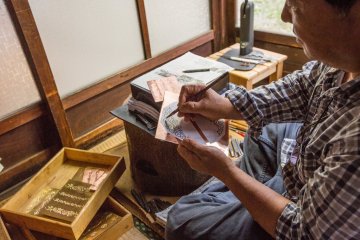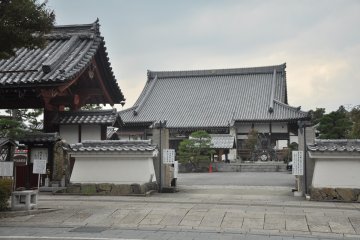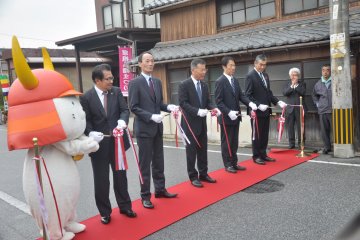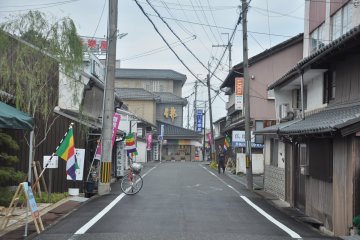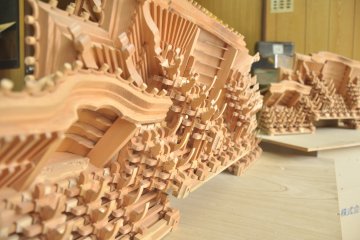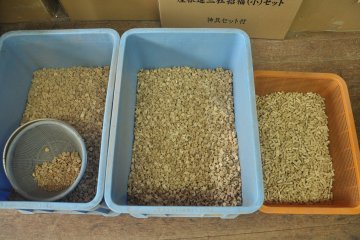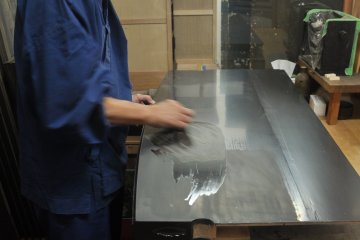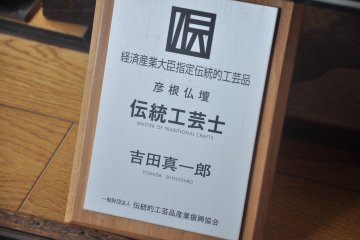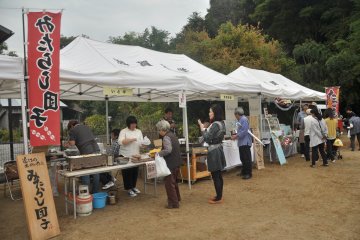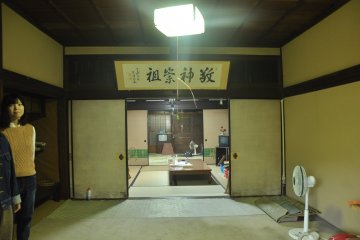The annual Buddhist altar festival in Hikone allows visitors a glimpse of an authentic religious tradition in Japan. The ceremony is held in a district called Nanamagari, which literally means "seven corners", named from the seven turns of one of the main streets which proved a strategically defensive function in the town's history.
The festival is kicked off by an opening ceremony attended by the mayor of Hikone, as well as other craftsmen and local stakeholders from the cultural sector. The mascot Hikonyan, who symbolizes Hikone city and its castle, even makes an appearance in the opening ceremony. The main street is closed to traffic so people can walk freely through the venue, which is lined with shops, restaurants and workshops, all devoted to the production of Buddhist altars.
There are seven different steps for making a Buddhist altar, each of which is a profession of its own. This essentially means at least seven craftsmen should be involved in the production of an altar. Walking along the main streets, you can encounter all seven workshops. By paying a small fee, people can experience working in these workshops, each managed by a master of that profession. To become a master requires time and perseverance. Normally it takes at least ten years of practice; some have even worked for 25 years before the title is granted by the government. The altars, all handmade, are available for purchase, but visitors are permitted to merely observe as well.
Aside from workshops focusing on Buddhist altars, other local handicraft stores also open their doors to visitors during the festival. Even very tiny shops set aside spaces for visitors to observe and experience their work. Along the main street as well as at other points of interest, local students, mostly from Hikone University, help provide guidance or explanations about the historical value of each location. Near one end of the main street, an empty car park functions as a food plaza, where food from the surrounding region is sold.
This festival is held on a Sunday in October and is popular with families. Hikone also offers several other sights to encourage travelers to stick around, including one of the few original remaining castle keeps in Japan.



